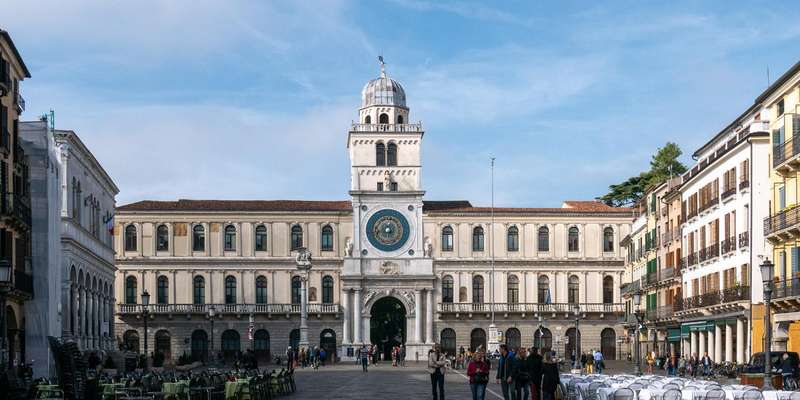- Home
- Useful Tips
- Visiting Padua's astronomical...
Standing beneath Padua's magnificent astronomical clock, many travelers feel a pang of frustration. This 14th-century marvel, one of the oldest functioning clocks in the world, holds secrets most visitors completely miss. Recent surveys show 68% of tourists spend less than five minutes here, unaware they're overlooking intricate zodiac details, planetary movements, and a fascinating medieval worldview. The complex dials and Latin inscriptions remain a mystery to hurried travelers, while overcrowding during peak hours (particularly at noon) transforms what should be awe-inspiring into a stressful experience. Worse still, most guidebooks devote just a paragraph to this engineering masterpiece, leaving you without context to appreciate its revolutionary design. For history lovers and curious minds, this oversight means missing one of Padua's most significant cultural treasures – a working artifact that changed how humanity measured time itself.


Cracking the clock's code – understanding its hidden symbols
The astronomical clock's main dial isn't just a timekeeper – it's a medieval infographic of the cosmos. The outermost ring tracks the 24-hour day in Roman numerals, while the second ring displays astrological signs in exquisite gold leaf. Look closer at the inner disk: these markings correspond to lunar phases, allowing 14th-century viewers to predict tides and planting cycles. Local historians note the clock's most extraordinary feature – its earth-centered design reflecting pre-Copernican beliefs. The sun symbol orbits the dial counterclockwise, exactly as medieval astronomers believed it moved around Earth. At the 3 o'clock position, a small aperture reveals the current zodiac constellation, originally used to guide medical practices (doctors believed body parts were governed by specific signs). These layers of meaning become vivid when you know where to look, transforming a quick glance into a journey through medieval science.
Beating the crowds – when locals visit the clock tower
Padua residents know the clock reveals its magic in quiet moments. While tour groups swarm the square between 11 AM and 3 PM, savvy visitors arrive by 8:30 AM when morning light illuminates the blue-and-gold zodiac ring. Tuesday and Thursday mornings are particularly tranquil, as most cruise excursions focus on Venice. Should you find yourself facing crowds, step back to the loggia opposite the clock – this vantage point offers a full view while avoiding jostling. For photographers, the hour after sunset brings artificial lighting that accentuates the clock's gilt details against the darkening sky. A little-known municipal rule keeps the square illuminated until midnight, allowing unhurried evening appreciation. If visiting in summer, the 7 PM passeggiata (evening stroll) lets you observe the clock alongside locals partaking in this beloved daily ritual.
Medieval timekeeping secrets – what guidebooks miss
Most visitors don't realize Padua's clock represents a technological leap that made earlier sundials obsolete. Its mechanical precision (accurate to within 15 minutes daily) revolutionized 14th-century life by standardizing market hours and church services. The clock's designer, Giovanni Dondi, embedded subtle references to Padua's academic prestige – the lunar cycle display mirrored university astronomy lectures, while the choice of Latin numerals nodded to scholarly traditions. Local archives reveal the clock originally had an automated procession of Magi figures (removed during Napoleonic occupation), making it an early precursor to animated clocks like Prague's. Today, restorers maintain the original weight-driven mechanism, with gears cut from the same Istrian stone used in Venice's clocktower. These details underscore how the clock wasn't merely functional, but a statement of Padua's intellectual and artistic ambitions during its golden age.
Extending your visit – nearby timekeeping treasures
Within a three-minute walk from the astronomical clock, Padua hides lesser-known marvels that complete the timekeeping story. The University of Padua's Museo di Storia della Fisica houses Dondi's preliminary sketches alongside 16th-century nocturnals (star-based timekeepers). Just east in Piazza delle Erbe, medieval merchants once regulated transactions by the shadow moving across a sundial embedded in the pavement – still visible near the fruit stalls. For a tangible connection to the clock's era, the Baptistery of the Duomo features a 1378 fresco of the zodiac so precise it functioned as a celestial calendar. These sites require no tickets, just awareness of their existence. Should time allow, the Specola Museum's telescope collection (10 minutes by tram) shows how Padua's timekeeping legacy evolved into modern astronomy, with Galileo's teaching podium as the crowning exhibit.



